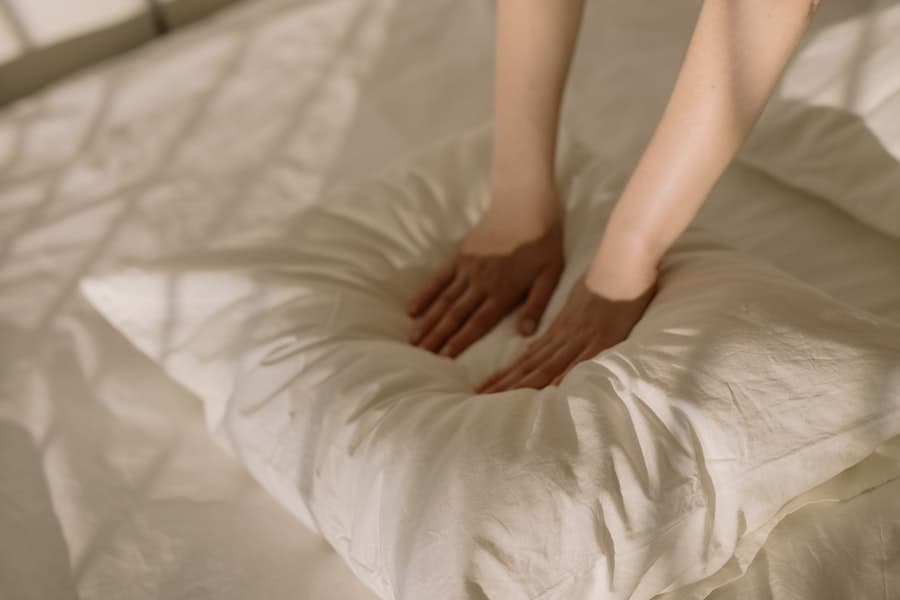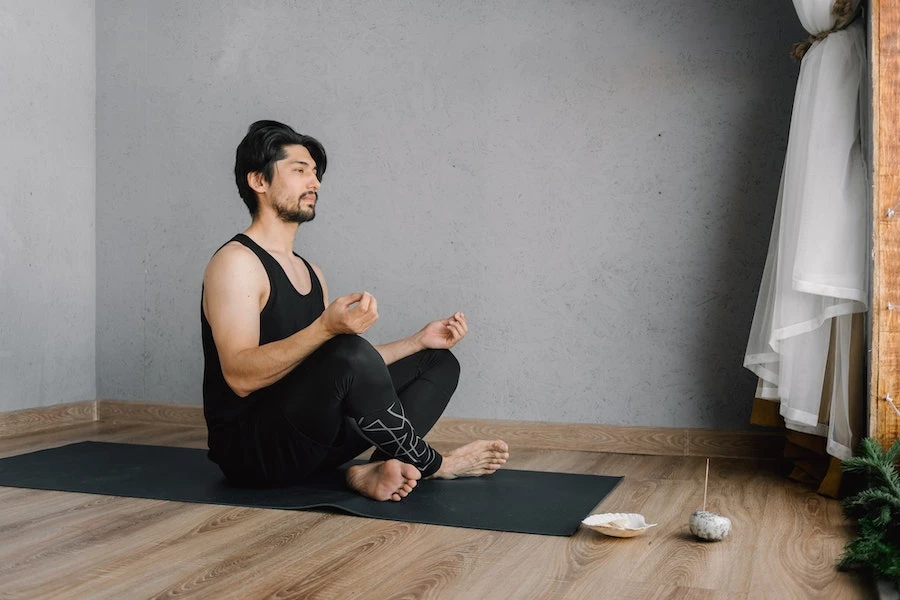Did you know that some crocheters choose to give away a finished crochet blanket as a gift instead of selling it? Handmade blankets are wonderful gifts, but they can be challenging to clean because of the intricate stitches and dense texture. You must follow special instructions when cleaning a handmade blanket so it retains its original beauty for years to come. Washing your hand-crafted blanket correctly will ensure that it retains its softness and vibrancy for many years. Read on for helpful tips on how to wash a crochet blanket.
How To Wash A Crochet Blanket?
Dry Cleaning Only
If your crochet blanket is made from 100% wool, you can dry clean it at the dry cleaner. Wool is highly water-resistant and naturally repels water, which is why it is often used in clothing and blankets. Dry cleaning your blanket will remove any dirt or stains without damaging the fibers of the blanket. Make sure to ask your dry cleaner how they clean your blanket, as some will use a special process to keep your blanket intact. Caring for a wool blanket is different from caring for other types of blankets, like a cotton blanket. You can’t wash a wool blanket, so make sure to dry clean it frequently to keep it clean and fresh. It’s also a good idea to keep a wool blanket away from direct sunlight, as it can fade the colors and cause the fabric to shrink.
Spot Cleaning
If your blanket is a synthetic fiber like acrylic or polyester, you can try spot cleaning it with warm water and a gentle detergent. You can use a small amount of detergent to remove stains from your blanket without damaging the fibers. If your blanket has a large stain, it might be best to take it to a professional cleaner. Even though spot cleaning will remove most stains, it won’t wash the blanket completely. You’ll still need to launder your blanket more thoroughly at some point. If you’re not sure if your blanket can be spot cleaned, take it to a dry cleaner for advice. A dry cleaner can tell you if the stain should be removed before the blanket is washed and what type of detergent to use.
Hand-Washing
If you have an acrylic or polyester blanket, you can try hand washing it with warm water and a gentle detergent. Make sure to use a large bowl or bucket, as synthetic fibers tend to shed a lot. You can also use a lint-free towel to gently squeeze out the soapy water. For best results, use lukewarm water and a mild detergent that’s free of fragrance and dye. You don’t want to use anything with a lot of chemicals, as they don’t belong in a washing machine. Just keep rinsing the blanket until the water runs clear. Once your blanket is clean and rinsed, squeeze it out as much as you can and lay it flat on a towel. Let it air dry away from direct sunlight.
Machine Washing
If your blanket is acrylic or polyester and can be machine washed, you can try washing it in warm water and a mild detergent. You can use a small amount of fabric softener, but don’t overdry the blanket. If your blanket is made from a different fiber, like acrylic or wool, you should take it to a dry cleaner for proper cleaning. You should wash your blanket on a delicate cycle. Make sure to use a small load size and select the delicate setting. The last thing you want to do is damage your blanket even more.
Drying and Storing Your Blanket
If you’re hand-washing or machine-washing your blanket, you should hang it to air dry. Make sure to remove excess water with a lint-free towel and then lay the blanket flat on a towel to air dry. When your blanket is completely dry, wrap it in an acid-free paper or a cloth bag to keep it dust-free. You can also place it in a pillowcase to protect it from being pawed at by curious pets. On top of protecting your blanket from dust and dirt, storing it properly will keep it wrinkle-free. A clean, un-wrinkled blanket is much more attractive than a crumpled one. If you’re in a pinch, you can also use an electric blanket to warm your crochet blanket and remove wrinkles.
Why Wash A Crochet Blanket?
It will get rid of the yarn smell
There is nothing worse than the smell of brand-new yarn. You might even find yourself wondering if the yarn was ever actually used before. That pungent smell of chemicals that many yarns have is often due to the fact that they are treated with finishes to make them last longer and keep them from becoming unspooled during shipping. In other words, it’s not supposed to smell like roses. The problem is, the smell will likely linger on your blanket no matter how many times you wash it. And that’s because the yarn will trap the smell inside. If you don’t want to be known as that person who smells like a yarn factory, it’s time to wash. Be careful when washing that you use the right amount of water and temperature or you could end up releasing the smell even more. You don’t want that.
Cleaning will make it softer
If you’ve made your blanket out of a rough yarn, washing it will likely make it even softer. This is because the soap in the wash will break down the fibers of the yarn, making it softer. Many people choose to go with a gentle detergent when washing their blankets. Some opt for baby shampoo if the blanket is made out of a material that is easily damaged. However, if you go with a basic detergent, you’ll still get the same results. And, you’ll smell a lot less like chemicals.
Washing will help prevent pilling
The term pilling refers to when pieces of fabric begin to form little balls. Most people associate pilling with sweaters. However, even blankets can begin to pill. This is often due to the type of yarn you used when making the blanket. While there are some things you can do to prevent pilling, washing your blanket regularly is one of the best ways to ensure it doesn’t happen. If you don’t wash it, the buildup of dirt and oils from your hands, as well as any pets you might have in your home, can lead to pilling.
Why Is It Important To Wash A Crochet Blanket?
- If you make your own handmade blankets, you understand the time, effort, and care that goes into making them. However, unless you’re planning to sell your blankets, you’ll need to know how to properly maintain them in order to keep them in good condition for years to come.
- Washing your handmade blanket is a crucial step toward keeping it looking beautiful.
- Handmade blankets are often made with delicate fibers that are easily damaged by improper washing techniques.
- If you don’t take the right precautions when washing your handmade blanket, you run the risk of damaging the fibers and skewing its color. The color of your handmade blanket will fade if you don’t properly care for it.
- The wrong combination of soaps and water temperature will cause it to bleed, fading the blanket and making it look old and worn.
- By washing your handmade blanket carefully, you can maintain its vibrancy for years to come. When you wash your crochet blanket, you strip it of dirt, grime, and allergens that can harm you and your loved ones.
- You also prevent the blanket from attracting or harboring pests like moths and other insects that can ruin the fibers and fabrics in your home.
The Pros Of Washing Crocheted Items
- Washing handmade items will remove dirt and grime that can harm you and your loved ones. – Soaps are gentler on handmade items than machine-made items and will not harm the fibers.
- Washing handmade items will extend the life of your blankets and other handmade pieces.
- Washing handmade items will remove allergens that can build up in fabrics and blankets.
- Soaps and cleaning agents are safe and non-toxic, meaning they are safe for children and pets.
The Cons Of Washing Crocheted Items
- Washing handmade items can damage delicate fibers and fade their original color.
- Washing handmade items can shrink them and cause them to tear.
- Soaps can damage the original feel of the fibers and change the texture of the blanket.
Final Words
We hope that after reading this article, you’re more prepared to clean and maintain your handmade crochet blankets. Follow these cleaning tips, and you’ll be able to extend the life of your handmade blankets, while also keeping your loved ones safe and healthy.








